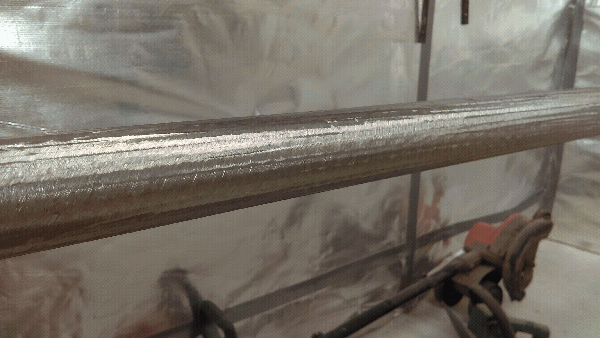Recall that instead of welding SS ears to a SS shaft, KHSD multis have used Goertz style composite ears for a couple of decades. A glass sleeve is bonded to the roughened shaft, then the composite ears are glassed to the sleeve. A nice job by Colm building a 31′ tri.

To my mind there is absolutely no reason to bond ears on at all.
I rough the shafts (often I just give the shaft to my machinist to roughen) , tight spiral wrap 3″ wide pieces of wet glass around the shaft, wrap again with peel ply or just flow coat the wet glass.
Glue on the foam in a pyramid stack with lots of bog around the shaft. Generally there should be no foam on the sides of the shaft where the outer skins pass over: Meaning it should be shaft, bog and skin in the critical area. My 65′ power cat has never had an issue with this. It covers 165 mile a day at 23 knots in rough hawaiian water 350 days a year for the last two decades
ears do provide a screed to sand to for fast shaping of the foil.
He wouldn’t happen to have a web presence on his build, would he? Like a blog or something? Any data points help me, since I’m in a boat vacuum up here.
The camshafts of most cars use knurling to add lobes for valve control. I did a job for one of the largest makers of camshafts. It is cheap and very reliable. Why use ears and complicate yourself with fiberglass…. That is a real question.